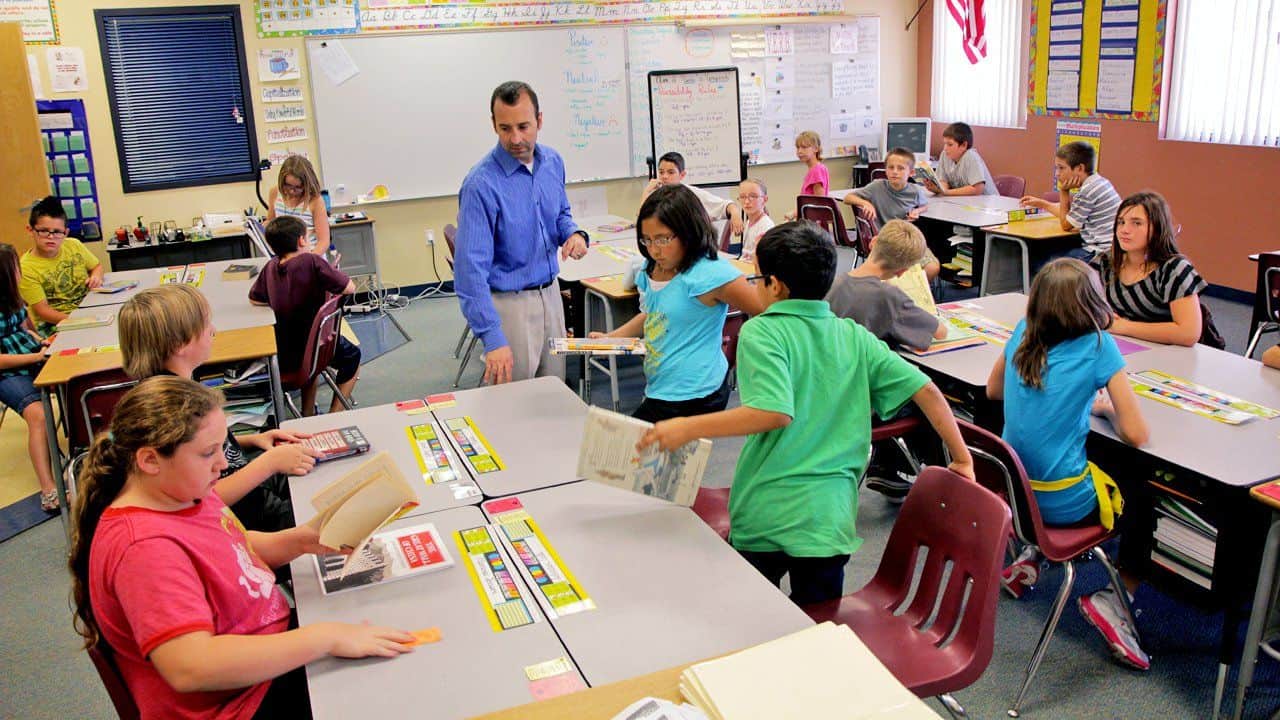District leaders in the Oakland Unified School District (OUSD) knew they needed to make a change. It had been more than a decade since they had originally adopted the Holt Literature and Language Arts textbook series for their secondary school students, and in the six years since the state adopted the Common Core State Standards, teachers had to use their own judgment and time to adapt the existing curriculum or even create whole-cloth curriculum to match the Standards. While this led to the development of some creative new materials, the identification of high-quality OER materials, and other innovative curriculum solutions, the situation was not ideal. Seventy percent of students scored below proficient on the ELA portion of the 2015 SBAC exam. Additionally, the district realized it was impossible to provide in-depth, curriculum-based, professional development to its teachers because everyone was using different materials. The enormous variation in materials meant that a group of teachers from the same district were limited in their ability to participate in effective teacher collaboration because they weren’t able to sit and analyze student work from the same text, nor could they analyze the same texts students were reading.
District leaders came to the realization that to provide high-quality support to help its teachers improve, they’d have to first adopt a Common Core-aligned curriculum that teachers believed in. They didn’t want the decision to come from the top-down. They wanted the choice to reflect what classroom educators said was important for providing Standards-aligned instruction.
Nancy Lai, PK-12 Literacy Manager for the OUSD said that she recognized that a lot of the changes textbook publishers made after the adoption of Common Core were nothing more than “bells and whistles; fluff with no big content changes that reflected the heart of the instruction.” Because teachers in the district had already been doing the heavy lifting, adapting their materials to meet the Standards, Lai and other district leaders knew that teachers would not be satisfied with new materials that incorporated only superficial changes.
To ensure that the new choices reflected the textbook criteria that were important to educators, a group of ELA Teacher Leaders designed a survey (attached below) to help capture what teachers used and wanted in a curriculum. The ELA Teachers Leaders were an existing group of representatives from schools serving grades 6-12. Each school had selected its own representative from a group of nominated and self-nominated candidates. Their existing leadership responsibilities made this a natural fit for them. In March of 2015, the ELA Teacher Leaders gave the survey to their departments, and then in April 2015, the Teacher Leaders identified patterns that would become the criteria used to evaluate different curricular options. Principals and district administrators were also invited to provide input via the survey.
| Category | Criteria |
| Common Core-Aligned Rigorous Tasks |
|
| Differentiation |
|
| Engagement/ Cultural Responsiveness |
|
| Language |
|
| Materials/ Technology |
|
| Unit Design/ Lesson Design |
|
Criteria developed by OUSD teachers to evaluate new ELA/Literacy programs.
The review team then used the criteria to help narrow down the possible curricular options and invited a set of publishers to submit their materials for review and piloting.
The decision to pilot the materials was made by the OUSD Literacy Department leaders because of a deeply-held belief in the importance of their district teachers’ professional input. They didn’t want educators to have to choose materials based simply on a vendor’s presentation, or worse, have district leaders choose the materials without allowing teachers to see and work with the materials. Thus, even though California does not require districts to pilot or collect implementation feedback on proposed materials (even if they’re buying materials not on the state’s approved list), Oakland’s leaders were adamant that its teachers should be a part of the piloting.
To learn how the district conducted its pilot of three possible ELA/literacy programs, watch for the next post in the Oakland Case Study Series.

















